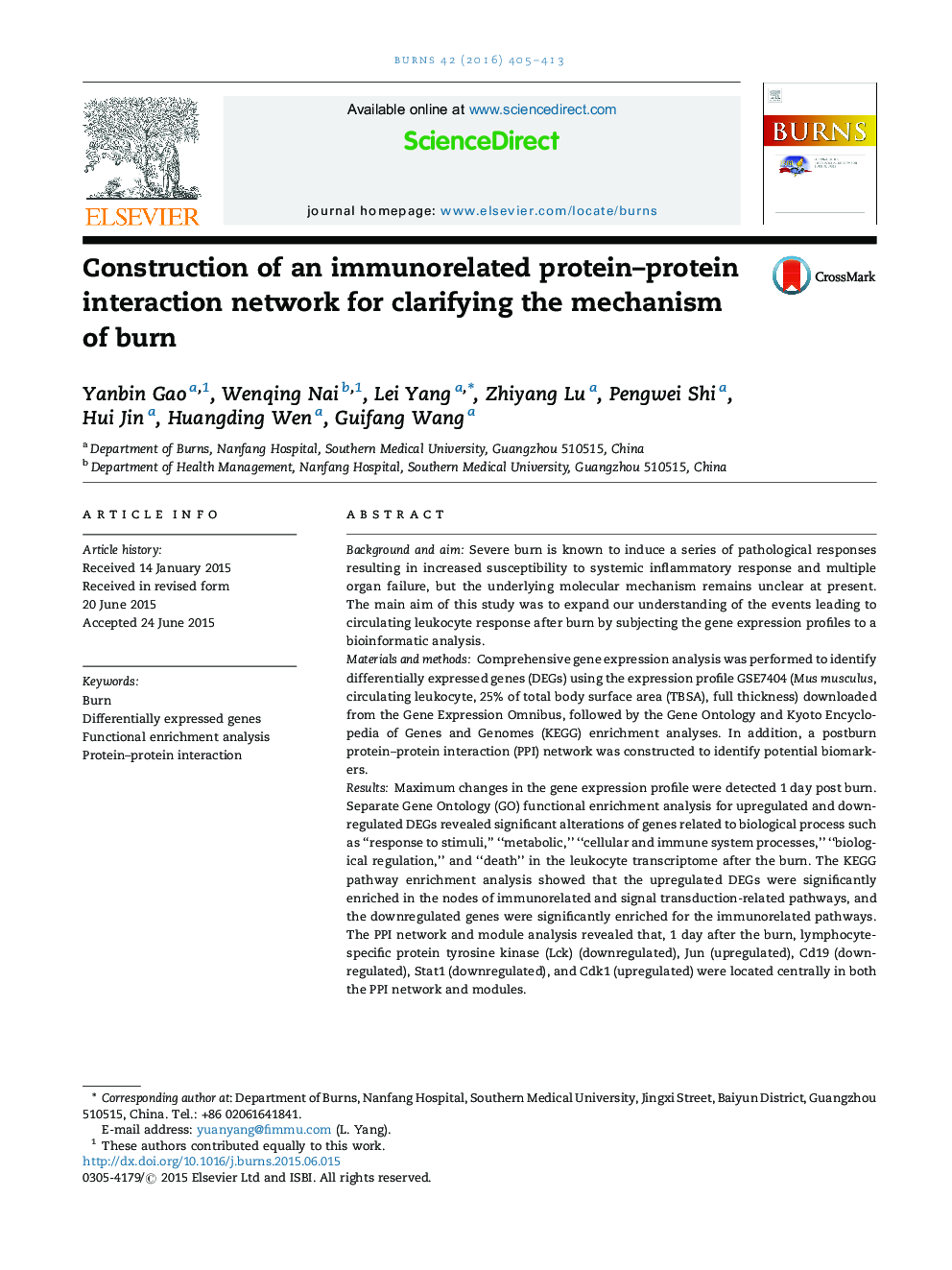| کد مقاله | کد نشریه | سال انتشار | مقاله انگلیسی | نسخه تمام متن |
|---|---|---|---|---|
| 3104048 | 1191639 | 2016 | 9 صفحه PDF | دانلود رایگان |
• The most significant alterations in differentially expressed genes (DEGs) were observed 1 day after burn.
• Enrichment analysis and protein–protein interaction (PPI) network construction were used to identify potential biomarkers.
• Lck, Jun, Cd19, Stat1, and Cdk1 were identified to be critical 1 day post burn.
Background and aimSevere burn is known to induce a series of pathological responses resulting in increased susceptibility to systemic inflammatory response and multiple organ failure, but the underlying molecular mechanism remains unclear at present. The main aim of this study was to expand our understanding of the events leading to circulating leukocyte response after burn by subjecting the gene expression profiles to a bioinformatic analysis.Materials and methodsComprehensive gene expression analysis was performed to identify differentially expressed genes (DEGs) using the expression profile GSE7404 (Mus musculus, circulating leukocyte, 25% of total body surface area (TBSA), full thickness) downloaded from the Gene Expression Omnibus, followed by the Gene Ontology and Kyoto Encyclopedia of Genes and Genomes (KEGG) enrichment analyses. In addition, a postburn protein–protein interaction (PPI) network was constructed to identify potential biomarkers.ResultsMaximum changes in the gene expression profile were detected 1 day post burn. Separate Gene Ontology (GO) functional enrichment analysis for upregulated and downregulated DEGs revealed significant alterations of genes related to biological process such as “response to stimuli,” “metabolic,” “cellular and immune system processes,” “biological regulation,” and “death” in the leukocyte transcriptome after the burn. The KEGG pathway enrichment analysis showed that the upregulated DEGs were significantly enriched in the nodes of immunorelated and signal transduction-related pathways, and the downregulated genes were significantly enriched for the immunorelated pathways. The PPI network and module analysis revealed that, 1 day after the burn, lymphocyte-specific protein tyrosine kinase (Lck) (downregulated), Jun (upregulated), Cd19 (downregulated), Stat1 (downregulated), and Cdk1 (upregulated) were located centrally in both the PPI network and modules.ConclusionsBased on an integrated bioinformatic analysis, we concluded that Lck, Jun, Cd19, Stat1, and Cdk1 may be critical 1 day after the burn. These findings expand our understanding of the molecular mechanisms of this important pathological process. Further studies are needed to support our work, focused on identifying candidate biomarkers with sufficient predictive power to act as prognostic and therapeutic biomarkers for burn injury.
Journal: Burns - Volume 42, Issue 2, March 2016, Pages 405–413
